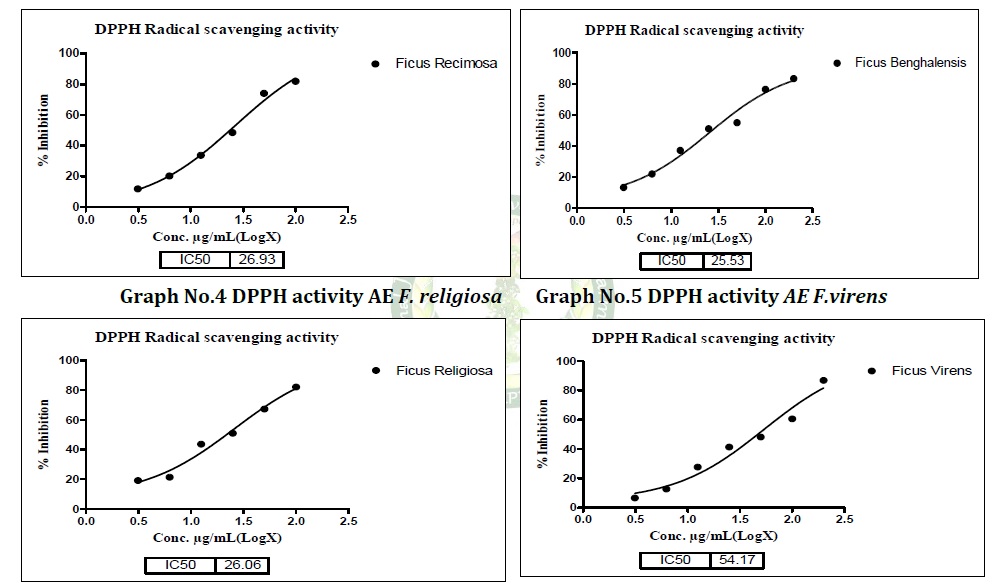Phytochemical Investigation and in Vitro Antioxidant Activity of Panchavalkala Bark Extracts
Abstract
Natural antioxidants have an important role in the prevention of many age-related diseases and promotion of health. Among natural antioxidants from plants, flavonoids and other phenolic compounds are potent antioxidants and chelating agents. Panchavalkala the barks of five trees i.e. Nyagrodha (Ficus benghalensis L.), Udumbara (Ficus racemosa L.), Ashwatha (Ficus religiosa L.), Plaksha (Ficus virens Aiton) and Parisha (Thespesia populnea (L.)Sol.ex Correa) are also known as Pancha Ksheeri Vrikshas in use since Vedic period. Barks of these trees are dried in shade and are used for different formulations (Pancha Kashaya Kalpanas), in different pathological conditions, especially as wound healing, gynecological disorders and etc. The plant samples were extracted using ethanol and water, and subjected for the phytochemical analysis. It was confirmed that samples contain many biologically active compounds like flavonoids, polyphenols, tannins, alkaloids, glycosides and terpinoids etc. The marker compound of each trial drug and the quantitative analysis has been carried out by high performance liquid chromatography. The antioxidant study was done by using in vitro method 1, 1-diphenyl-2-picryl-hydrazyl (DPPH) radical scavenging assay. The marker compounds caffeic acid and gallic acid were quantified in each extract for their quality and efficacy. PVK barks showed high free radical scavenging activity as evidenced by the low IC50 values in DPPH (EE PVK- 20.46µg/ml, AE PVK-37.79µg/ml, EE T.poulenea-22µg/ml, AE T. poulenia- 23.31µg/ml AE F. benghalensis- 25.53µg/ml, EE F. benghalensis- 26.23µg/ml, EE F. religiosa - 34µg/ml). Quercetin- IC50 value 4.026µg/ml is used as standard.
The results of the study demonstrated that PVK barks possess phyto-constituent’s viz. tannins, flavonoids, polyphenols etc. and has potential antioxidant activity. Thus these barks have good therapeutic potential as natural antioxidant and might be used in life style related conditions like hyperlipidemia, diabetes, obesity, cardiovascular disorders and etc.
Downloads

Copyright (c) 2023 International Journal of Ayurveda and Pharma Research

This work is licensed under a Creative Commons Attribution-NonCommercial-ShareAlike 4.0 International License.






